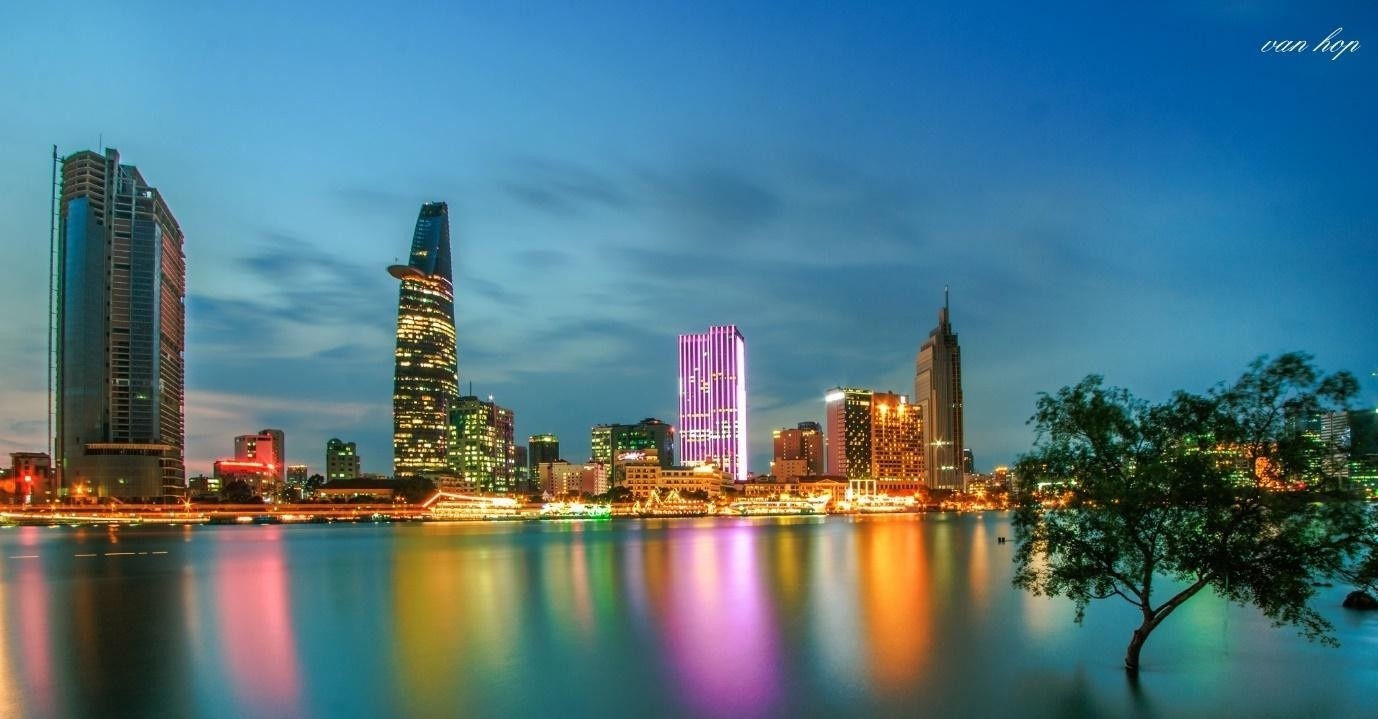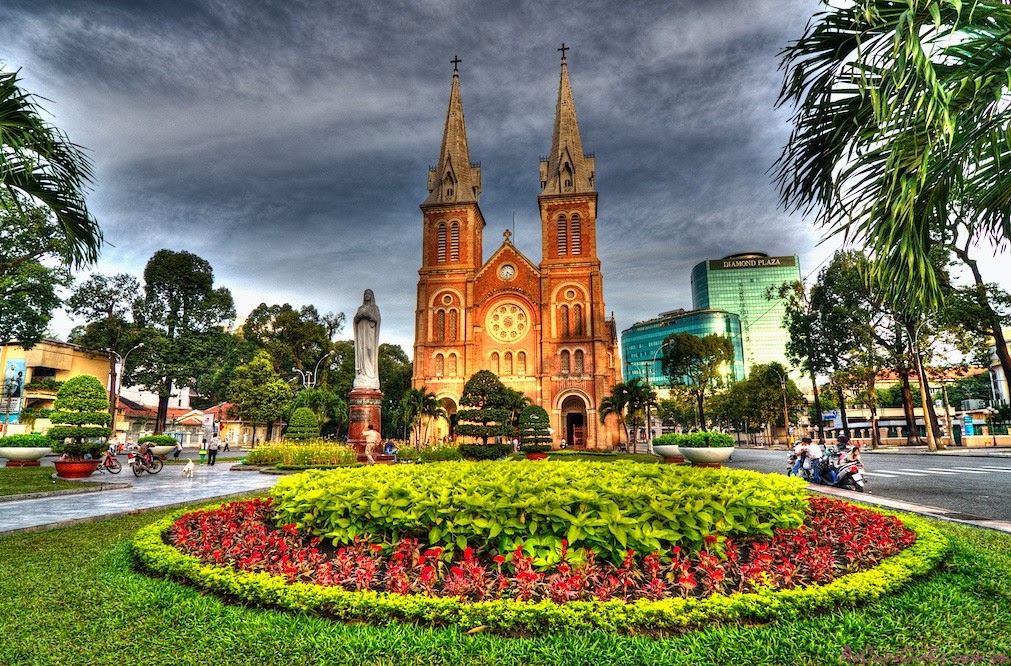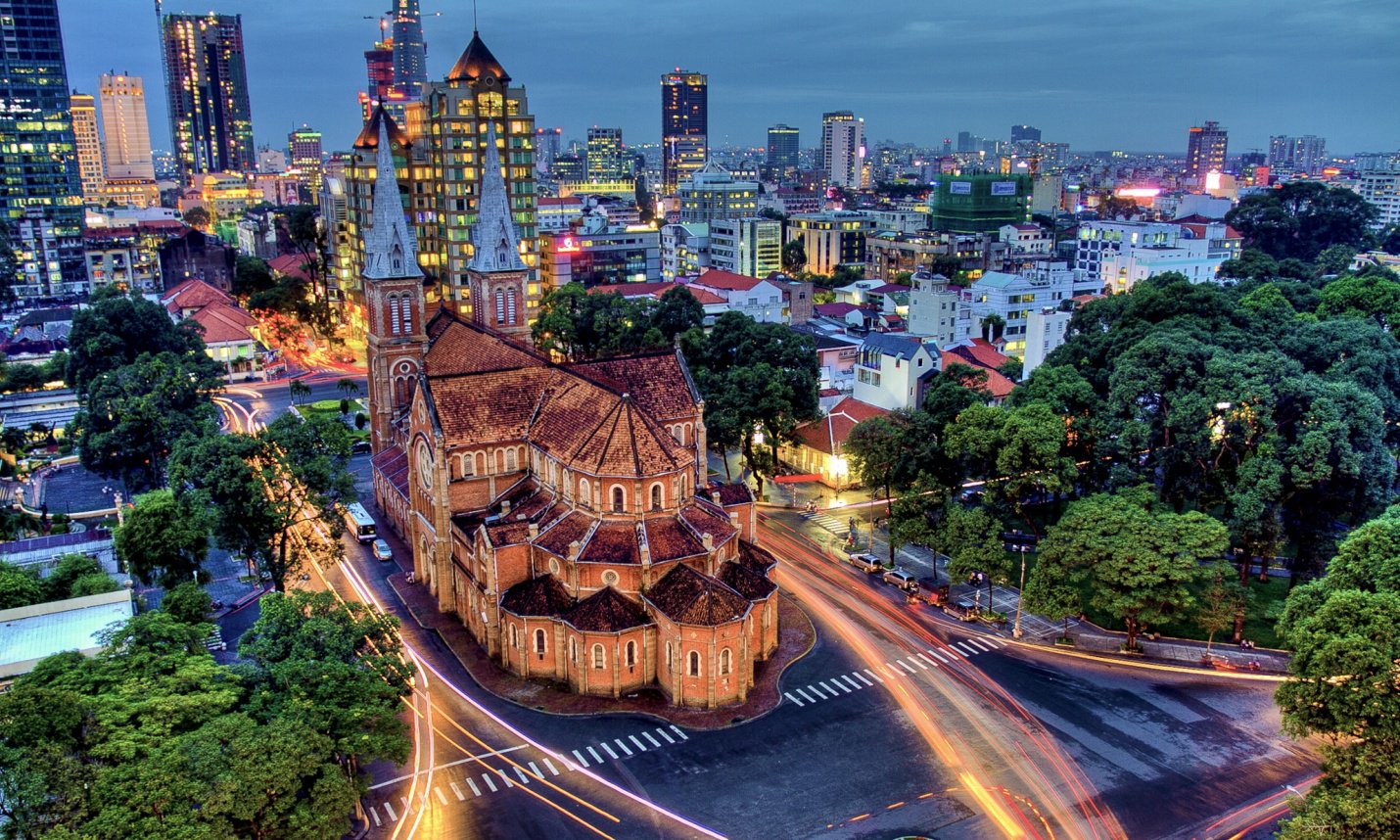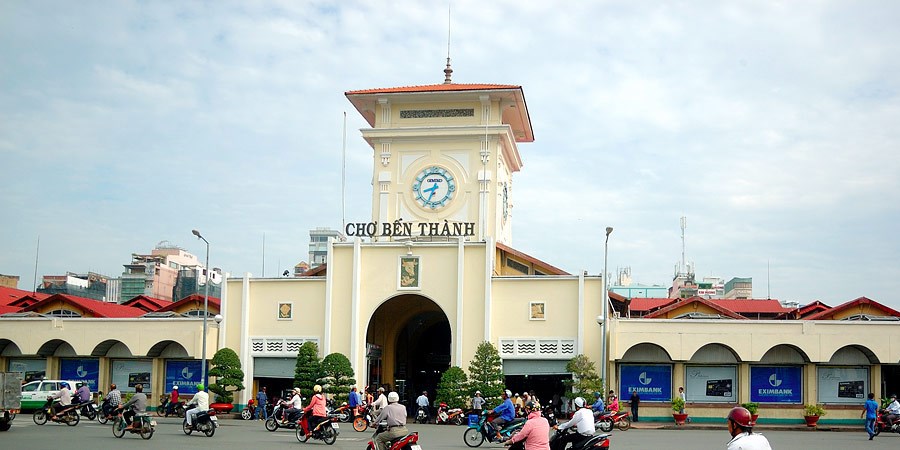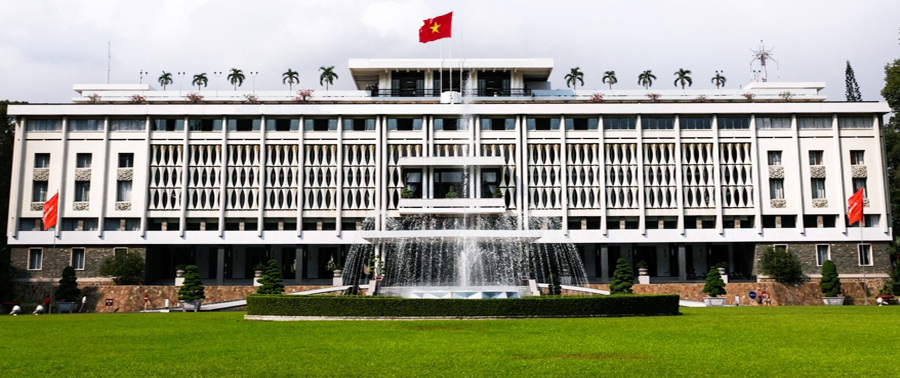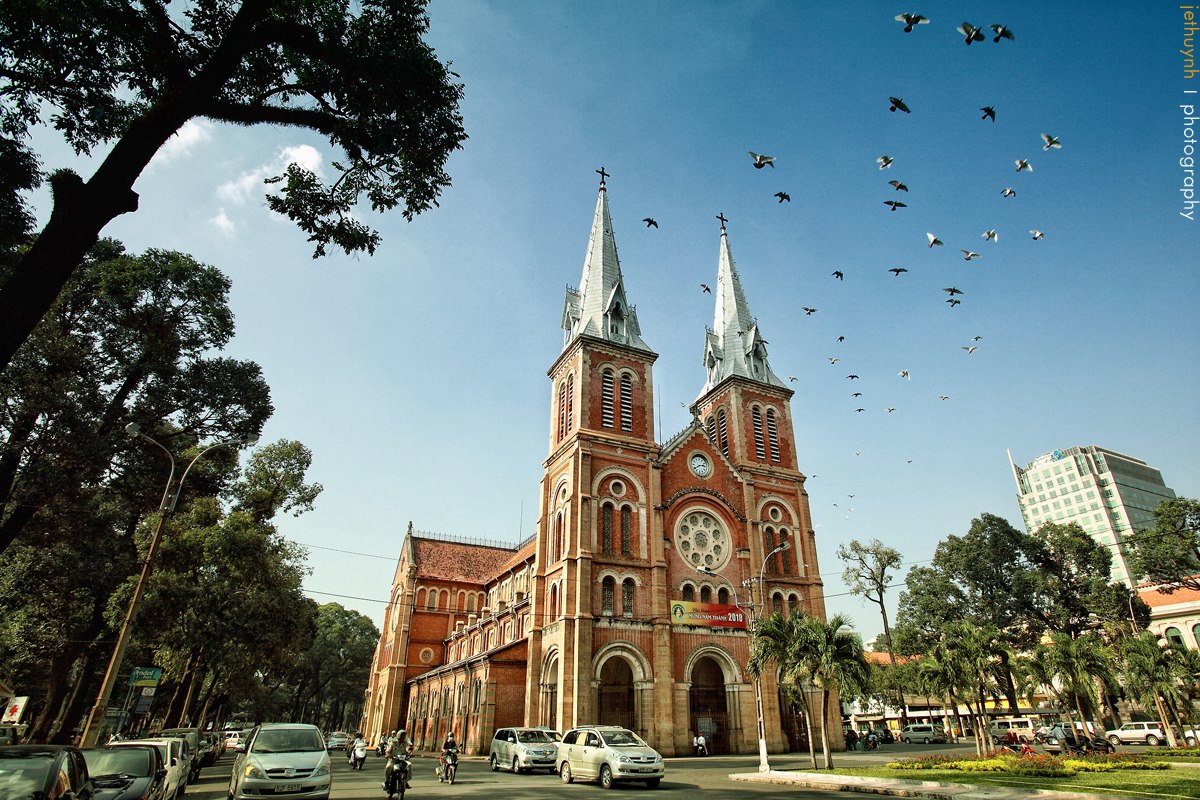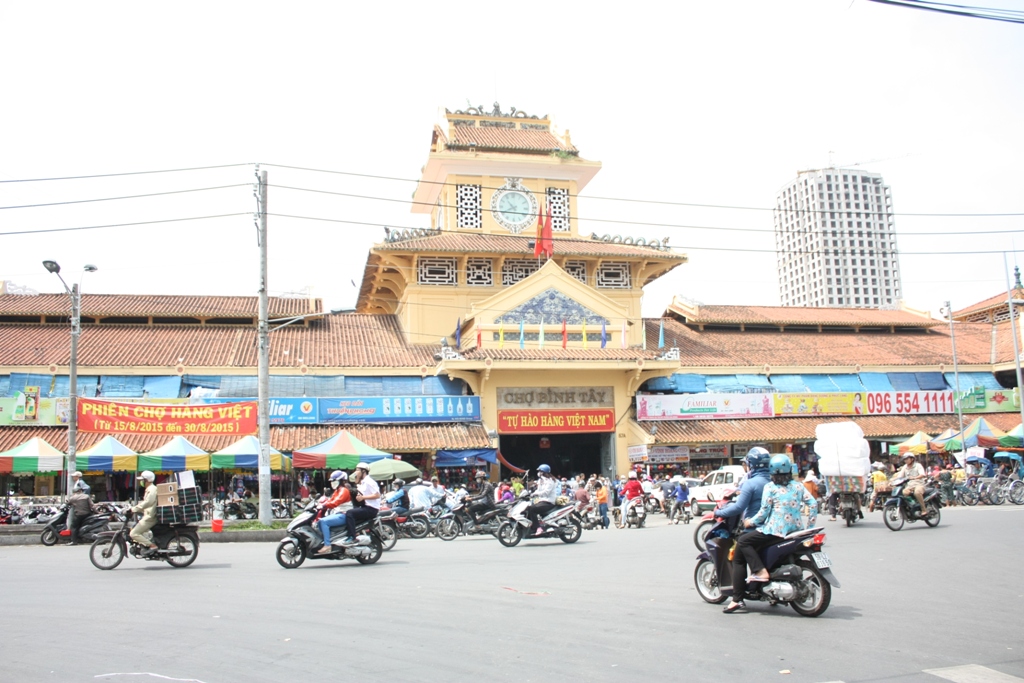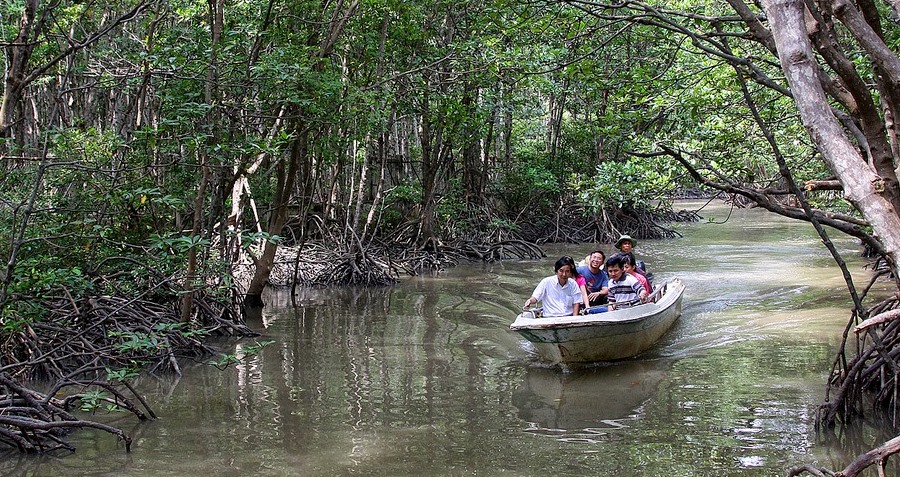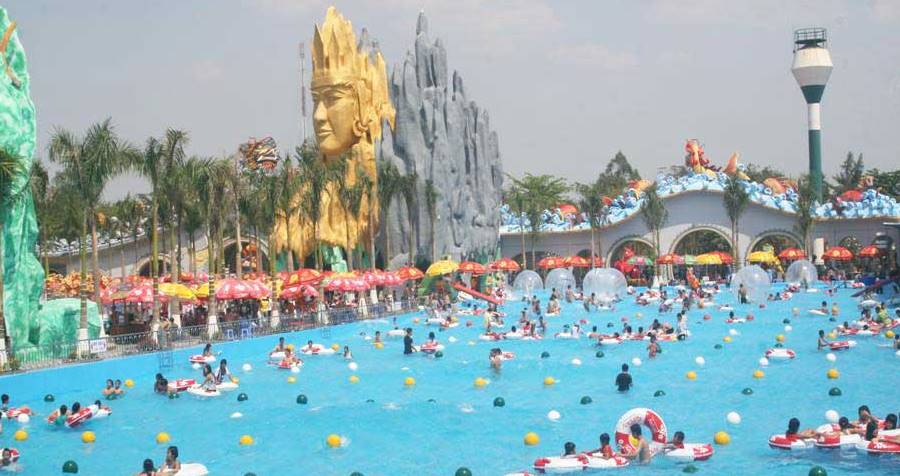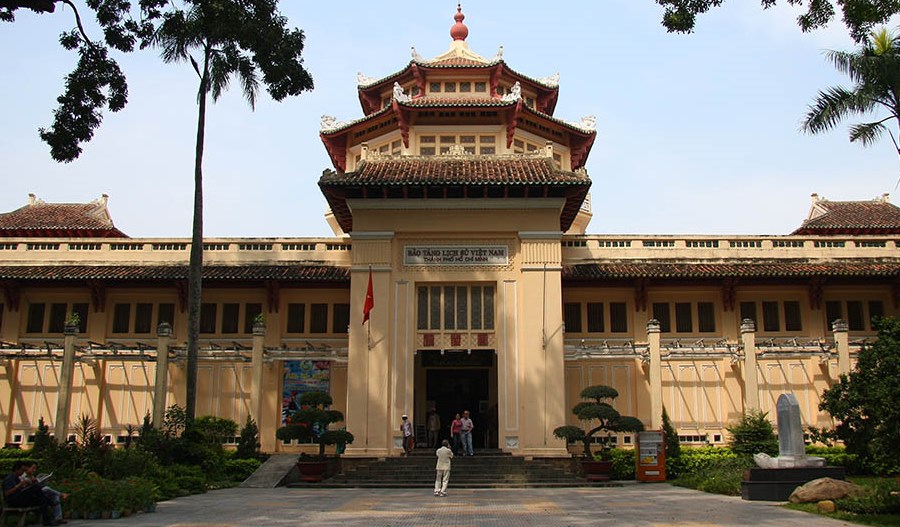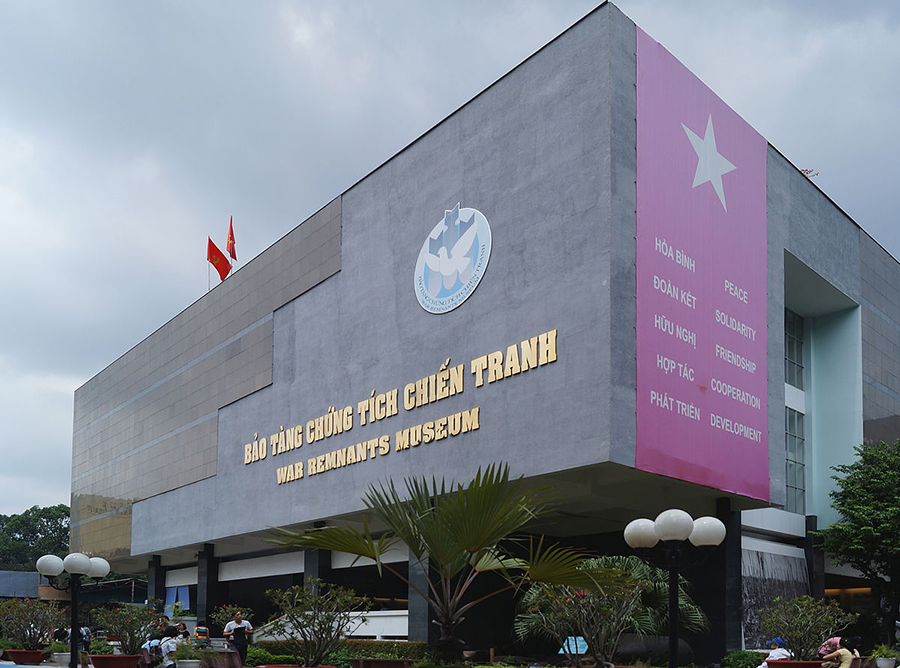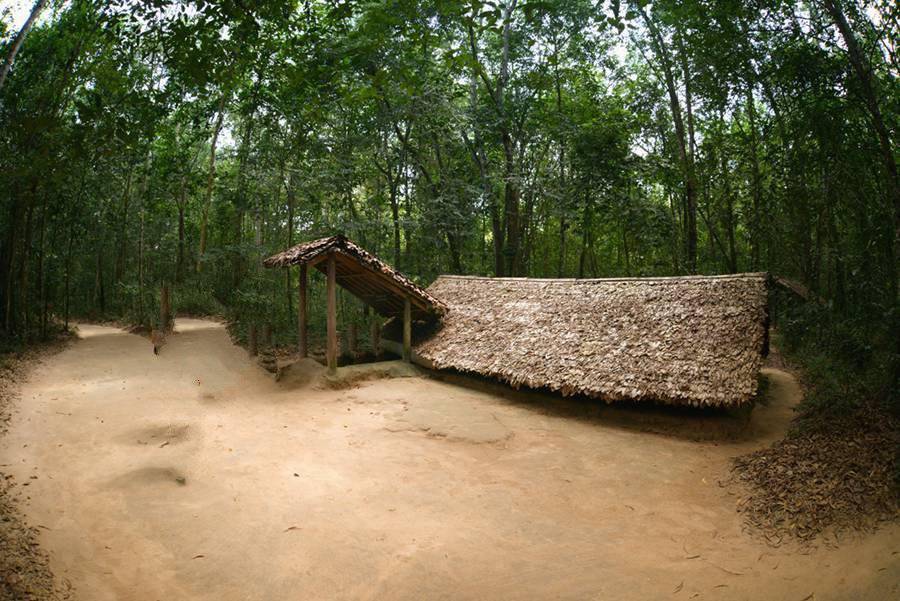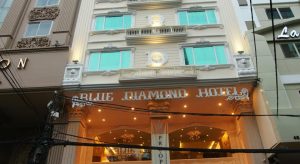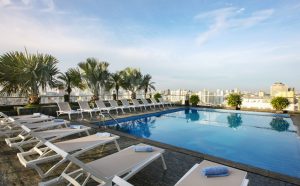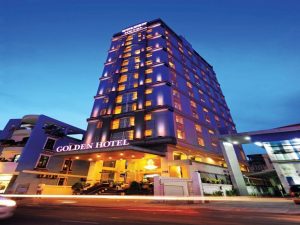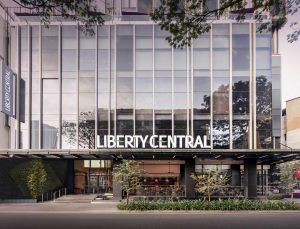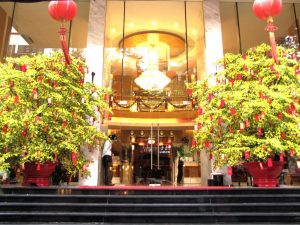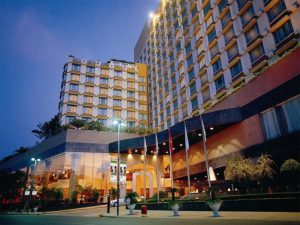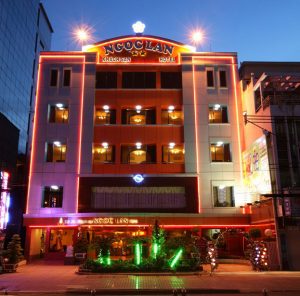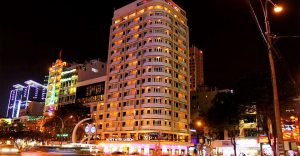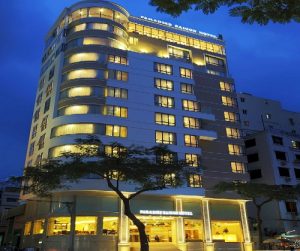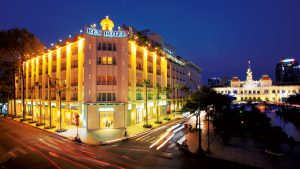Located at the strategic watergate in Mekong River Delta, Ho Chi Minh City also commonly known as Saigon is national hub of commerce, technology science research and culture. Though just accounting for 0.6% of land area, nevertheless it contributed the largest proportion to Vietnam economy. Ho Chi Minh City always leads the way in terms of high tech renovation, professional managements and decent services. The City is famous for pleasant climate that attracts vocations all year long. Moreover, it is also the home to hundreds of shopping malls, trade centers, entertainment places and eco-tourism destinations. There are many great historical and cultural sites as Cu Chi Tunnel, systems museums, pagodas, temples and beautifully architectural buildings those are dazzling combined Vietnamese, Chinese and Western styles. Passing through over 300 historical years, Ho Chi Minh City continued to flourish as leading dynamic metropolitan and well-preserved cultural treasures of Vietnam.
CLIMATE
It can be said that anytime in a year is a good time to visit Ho Chi Minh City. Once called The Pearl of the Orient, Ho Chi Minh City is famous for its pleasant climate and rarely suffer from natural disasters like the Central or Northern Vietnam. With a tropical climate of 2 distinctive seasons: dry and wet, it’s suggested that you should pay a visit to Ho Chi Minh City during the dry season, starting from December and lasting until April.
RESTAURANTS/DINING
Noodles
Pho is rice noodle that’s served in a flavourful soup with beef, bean sprouts, lime wedges, and greens such as basil, mint, cilantro, and onions with a side of chilli sauce for added spice. A basic bowl contains tai (beef slices), bo vien (beef meatballs) or nam (beef flank), but diners can also opt for more exotic ingredients such as gan (beef tendon), sach (thinly-sliced pig stomach), and ve don (flank with cartilage).
Vietnamese Shellfish
Best enjoyed with cold beers, oc refers to platters of Vietnamese shellfish that are prepared in varying methods. Due to its popularity, there are plenty of roadside stalls and inexpensive restaurants with raw snails, blood cockles, clams, shrimps, and crabs displayed out front. After selecting those that strike your fancy, you can enjoy them grilled, sautéed, curried, or steamed. Priced at VND 20,000 onwards, we highly recommend grilled mussels with scallion oil and peanuts (chem chep nuong), blood cockles sautéed in tamarind sauce (so huyet ran me), and clams steamed with lemongrass.
Broken Rice
Com tam is actually ‘broken rice’ in Vietnamese, usually served with fried egg, diced green onions, and a variety of meats such as suon nuong (barbecued pork chop), bi (shredded pork skin), and cha trung (steamed pork and egg patty). Diners can also enjoy this dish with a side of pickled vegetables, cucumber slices, and nuoc cham Vietnamese dipping sauce…
Vietnamese Spring Rolls
Goi cuon or Vietnamese spring rolls comprise vermicelli noodles, pork slices, shrimp, basil, and lettuce tightly wrapped in translucent banh trang (rice papers). Due to its very subtle flavour, you can dip it in a mix of freshly ground chilli and hoisin-based dipping sauce topped with crushed peanuts. This traditional appetiser is a healthier alternative to cha gio, which is a deep-fried egg roll made with a combination of mung bean noodles, minced pork, and various spices.
Crispy Pancake
Ban xeo is a savoury pancake that’s made of rice flour, coconut milk, and turmeric, stuffed with ingredients such as pork slices, shrimps, sliced onions, bean sprouts, and button mushrooms. Unlike the ones you find in Nha Trang and Hanoi, ban xeo in Ho Chi Minh City is much smaller in portion as it is usually eaten as a snack or appetiser. The best way to enjoy ban xeo is by wrapping it in mustard leaf, lettuce leaves or rice wrappers, together with mint leaves, basil, herbs, and sweet fermented peanut butter sauce. Lastly, dip it in a sweet and sour fish sauce.
Rice Noodles
Hu tieu is a subtler version of pho noodles, featuring a clear pork-based broth, flat rice noodles, and an assortment of pork toppings. There are also countless variations available in Ho Chi Minh City, though the most popular one is hu tieu xuong, which is topped with pork ribs. Alternatively, you can enjoy hu tieu with shrimp, squid, or fish if you’re not a fan of pork.
Caramelised Fish in Clay Pot
Served in numerous Vietnamese restaurants within Ho Chi Minh City, ca kho to refers to catfish braised in a clay pot. This dish is prepared by cutting a whole catfish into fillets before it’s braised in a thick gravy made with a combination of soy sauce, fish sauce, sugar, shallots, garlic, and various spices and seasonings. Due to its intense sweet-salty flavour, ca kho to is always served with a plate of white rice.
Rolled Cake
Loosely wrapped in a steamed fermented rice sheet, banh cuon contains a mix of ground pork, minced wood ear mushroom, onions, Vietnamese ham (cha lua), steamed beansprouts, and cucumbers. You can easily spot vendors selling banh cuon in prominent marketplaces such as Cholon and Ben Thanh Market as well as local restaurants in Ho Chi Minh City. This traditional Vietnamese dish is sometimes topped with shrimp floss, coriander, and herbs, with a sweet-sour dipping sauce made with fish extract, lime, and chilli.
Vermicelli Noodles with Grilled Pork
A hearty dish in Ho Chi Minh City, bun thit nuong features vermicelli rice noodles with freshly chopped lettuce, sliced cucumber, bean sprouts, pickled daikon and carrot, basil, chopped peanuts, and mint, topped with grilled yet tender pork shoulder. Diners can also opt for bun thit nuong cha gio, which comes with crunchy slices of cha gio (deep-fried eggrolls). As with most Vietnamese dishes, you also get a side of nuoc cham sauce to mix into the bun thit nuong for a flavourful ensemble.
BEN THANH MARKET
At first, the market was situated near the Ben Nghe River Dike. After being moved many times, it is now standing in the centre of the city where consumers can conveniently find all sorts of products. According to Vuong Hong Sen, author of “the book Saigon of the Past”, in 1912, the French filled a pond, the Boresse, into a solid foundation of 12,000m2 and built a market on it. The market was close to a landing stage (Ben) of the old city (Thanh), hence its name of Ben Thanh. The opening ceremony for the market in March 1914 was a big festive event. At present, the front of Ben Thanh Market faces Quach Thi Trang Square; its rear faces Le Thanh Ton Street; its right, Phan Chu Trinh Street and its left, Phan Boi Chau Street. At all of its four sides, there are bustling trading shops. Located at the centre of the city, Ben Thanh Market is always loaded with varieties of goods, such as consumer goods, cakes and candies, food and foodstuff, and particularly high-quality fruit and vegetables. Goods are displayed in a very attractive way that always catches the eyes of the buyers. They meet all requirements for the customers’ daily life or for their families. The market has four gates that are very convenient for the market-goers. For all of its advantages, Ben Thanh Market is one of the most attractive tourist sites in the city for both domestic and foreign visitors.
THE INDEPENDENCE PALACE
This is the place marking the complete victory of anti-American resistance war, libration of the South and national reunification. Originally called Norodom Palace and Palace of Indochina Governor General, the Independence Palace was built in 1868 and inaugurated in 1871. After 1954, Ngo Dinh Diem, South Viet Nam’s Presdent, and his family lived and worked in the Norodom Palace. He decided to renamed it the Independence Palace. In 1962, this palace was heavily destroyed by bombs. President Diem commanded the remains to be destroyed and to rebuild the palace It was designed by Western-trained architect Ngo Viet Thu. The construction was undertaken by Sai Gon engineers and was completed in 1966. The new palace was built on an area of 120,000m² with a surface area of 4,500m². It included a basement, 3 main floors, 2 mezzanines, one terrace, and one upper floor. There are a total of 95 rooms in the palace, each decorated according to its function. The palace also features two exhibition rooms, a 33-room guest house, and numerous entertainment services such as tennis courts and octagonal house. On 30 April 1975, the tanks of the liberation army entered The Independence Palace, and the Sai Gon government, including 45 members and President Duong Van Minh, surrendered without condition. After the liberation, The Independence Palace became headquarters of the city’s military administration committee. The political consultation for national unification was held in this palace. Nowadays, The Independence Palace has become a historic, cultural relic attracting domestic as well as international visitors.
DUC BA CATHEDRAL
This is one of the oldest and biggest Catholic churches in Viet Nam. The resplendent Governor’s Palace, completed in 1875, symbolized the regime’s political power in Asia. And five years later, the Duc Ba (Our Lady’s) Cathedral was inaugurated, and became the spiritual and cultural crucible of the French presence in the Orient. After the first French colonizing force arrived in Viet Nam in the mid – 19th century, it took only 21 years before the country had a cathedral to match the hulking Gothic edifices of France itself. The cathedral is supposed to represent the glory of the French Empire. Yet, as is always the case with colonization, this attempt to import French traditions into Viet nam transformed the colonizers’ culture in the process. Even though the cathedral is built in a Western architectural style, it has a uniquely Eastern aspect. Several architects put forward design proposals for the cathedral, but in 1877 the authorities selected Mr Bourard, who was famed for his religious architecture. He envisaged, and executed, a basilica-like structure with a square plan. The cathedral is composed of two main central bays with two sidereal corridors, with tall pillars and light coming in through sets of high windows, and a semi-circular shrine. The style follows a Roman pattern, although the outside contains some modifications: the cathedral’s vaults are Gothic, and a modern steel skeleton supports the whole building. In 1894 a pointed minaret was added to the bell tower, at the behest of an architect named Gardes, who was also responsible for the Xa Tay Palace, the building that now houses the Municipal People’s Committee. The cathedral is a much smaller than those in France, but it was the largest in the French empire. The interior is very large: the principal shrine and two additional bays are 93m long, and reach 35m in width at one point. The semi-circular shrine at the rear seats a choir during services, and there are five chapels. The walls are made of Bien Hoa granite, combined with red tiles from Marseilles, all without coating. Red tiles from France were also used on the roofs, but they were later replaced with tiles of equal quality from Phu Huu. Natural light streams in through stained-glass windows which were made by the Lorin Company from the French town of Sartre. The whole building is well-ventilated thanks to a system of air-holes placed above and under the windows. The belfry is 57m high. For a long time it was the highest structure in the city centre, and was the first thing an arriving traveller would see when approaching the city by boat. Six bells weigh a combined 25,850kg. In 1885, the floor was taken apart and new pillars were added, because the original foundation could not bear the cathedral’s weight. Stepping inside the cathedral, tourists see a line of Chinese characters eulogizing the Jesus’ mother, “the innocent and unblemished Virgin Mother”, and stained-glass portraits of Vietnamese believers amid Asiatic plants. On the square in front of the cathedral, there is a statue of the Virgin Mother made of white marble, symbolizing peace. All told, it’s an unusual building: a Western architectural and religious style that has been transplanted into, and adapted to, the East. The colonizers were trying to impose French beliefs and customs onto Viet Nam but once that culture arrived on Asia’s shores, it took on a life of its own. The cathedral is seen as a unique synthesis, adding an unmistakable Oriental flavour to an ancient Occidental recipe.
BINH TAY MARKET
Binh Tay Market, constructed by the French in the 1880s, is located in the centre of Vietnam’s largest Chinatown district. Unlike Ben Thanh Market in District 1, this market mainly serves the local population with its extensive range of fresh fruits, vegetables, poultry, meat and seafood from regions across Vietnam. Also known as Cholon Chinatown Market, Binh Tay Market occupies a two-storey building along Thap Moui Street. Travellers can also find an assortment of handicrafts, lacquerware, and textiles that are sold in bulk, though goods are not varied compared to other (more touristy) markets in downtown Hanoi. Along with the interesting historical and cultural aspect of Cholon, Binh Tay Market is great for experiencing the local lifestyle and sampling unique Vietnamese-Chinese delicacies. A popular breakfast spot amongst locals, there are plenty of food stalls selling Vietnamese staples in the market including pho noodles, goi cuon (spring rolls), and com tam (broken rice) as well as Chinese-influenced delicacies such as banh bao, which are steamed buns filled with pork or chicken, onions, eggs, mushrooms, and vegetables. A courtyard is set the middle of the marketplace, where you can find a stone altar commemorating Guangdong-born philanthropist Quach Dam. Binh Tay Market is accessible within a 15-minute xe om (motorcycle taxi) ride from downtown Ho Chi Minh City. The best time to visit is in the morning as that’s when the locals come for breakfast and shop for fresh produce and household supplies.
CAN GIO MANGROVE BIOSPHERE RESERVE
Ly Nhon Commune, Can Gio District, Ho Chi Minh City, 50km from the city’s centre. Can Gio Mangrove Forest was recognized as World Biosphere Reserve by UNESCO in 2000. Is is the first biosphere reserve in Viet Nam and is the 368th member of the international network of biosphere reserve. Covering an area of 75,740ha, Can Gio Mangrove Forest is a lively world of 150 kinds of flora, 137 species of fish, 31 species of reptiles, 4 species of mammals, 130 species of birds which has inspired biologists and nature lovers alike. At Can Gio, visitors have opportunities to indulge in a fresh green environment and also to explore the mysteries of the tidal swampy ecosystem and thrill to the legends of amphibious commandos during the Viet Nam War. Vam Sat is located in the core area of Can Gio Mangrove Biosphere Reserve. The eco-tourism site of Vam Sat Mangrove Forest with an area of 2,000ha has beautiful landscapes and clean environment. Visitors to Vam Sat can stay overnight at the houses by the seaside, under the foliages. This area has many interesting activities that attract a large number of domestic and foreign visitors.
SUOI TIEN THEME PARK
As a tourist site of Southeast Asian rank, Suoi Tien still preserves a pure, green, and clean environment, which makes it “the lung” of Ho Chi Minh City. It is thus an ideal place for holidaymakers from far and near. The 105ha cultural tourist site of Suoi Tien includes a sightseeing area, a holiday resort, and a high-quality entertainment area. Inside Suoi Tien, one finds a giant dragon of 400m, and a statue of unicorn. Visitors may visit flower and butterfly grottoes, the crocodile-breeding farm with about 25,000 crocodiles, the 8-ha orchards, or the nice, attractive square of the mysterious palace of twelve animals. They can catch a mini-train to tour the site. There is still more. Among them are self-controlled Boeing planes, one 30-m swing, air-bicycle excursions to the crocodile farm, or high-speed hydroplanes. Visitors to Suoi Tien also have chances to immerse themselves in the poetic landscapes and see Sea World with hundreds of species of fish, which are breeding in the glass tanks.
MUSEUM OF VIETNAMESE HISTORY
Formerly known as the Blanchard de la Brosse Museum, it was then called Saigon National Museum in 1956. After 1975, it was renamed Museum of Vietnamese History. Designed by a talented French architect, the striking building firstly used to showcase ancient art collections of some Asian countries. But, after the expansion, it has displayed an interesting collection of about 30,000 artifacts from the early Vietnamese kingdom till today. Located inside the tranquil Saigon Zoo and Botanical Gardens Ho Chi Minh City, the museum is worth a visit, thanks to its magnetic architecture, favorable location and a wide variety of collections. Built in 1929 with the harmonious combination of Indochinese and French styles, the museum and the surrounding gardens do give visitors a peaceful escape from the bustling city vibe. Simply enjoy a promenade around the gardens and zoos for a chance to learn more about nature and history. From the outside, you can find it hard to take your eyes off the imposing main façade of the museum. Like other Ho Chi Minh City’s colonial structures, it’s highlighted by the grand and prominent beauty. Just feast your eyes on the tower above the entrance to see how it is really reminiscent of one of the great pagodas in the city. Inside, the walls of the main hall are beautified by a white motif, which is similar to the colonial French structures. All displays inside the museum are arranged in chronological order. You may start your discovery by roaming around the section where a collection of coins, axes and spears from the Dong Son civilization is on display. Keep strolling to learn the myths around the unique culture of ethnic minorities in Southern Viet Nam, like the Mekong Delta, Oc Eo Culture, or Cham art. Then, gaze at an assortment of sandstone sculptures and woodcarvings, presenting their religious symbols and gods. In this section, the favorite part is a set of valuable sculptures and stone relics from the Angkor Wat Temple, Cambodia. Museum of Vietnamese History also contains a large space, which emphasizes the pivotal years of the Nguyen Dynasty from 1802 to 1945. Tourists will be mesmerized by the precious clothing worn by royal members as well as understand how normal people lived under the French colonial rule and command of the emperor. On the whole, the building also consists of a small water puppet theatre as well as a historical research library. You are expected to watch a traditional Vietnamese water puppet performance at the museum, with an extra fee.
WAR REMNANTS MUSEUM
War Remnants Museum is located on Vo Van Tan Street, Ho Chi Minh City. The War Remnants Museum was established in September 1975 in Ho Chi Minh City. It contains countless artifacts, photographs, and pictures documenting American war crimes. Such documents illustrate the killing of civilians, spreading of chemicals, torturing of prisoners, and the effects of the war on the north. Planes, tanks, bombs, and helicopters are also on display. Outside the museum are some rooms displaying cultural products of Vietnam. Over the last 20 years, over 6 million visitors entered the museum. Among this number, nearly 1 million were foreign visitors, including American tourists.
CU CHI TUNNELS
Cu Chi Tunnels are located approximately 70km northwest of Ho Chi Minh City centre in Cu Chi Rural District. Cu Chi Tunnels is one of the most famous historical vestiges of Viet Nam’s national liberation war during 1945-1975. Cu Chi Tunnels consist of more than 200km of underground tunnels. This main axis system has many branches connecting to underground hideouts, shelters, and entrances to other tunnels. The first parts of short and simple tunnels were established in 1948 in two communes of Tan Phu Trung and Phuoc Vinh An, and then system of tunnels was expanded in 6 communes in north of Cu Chi District. The network consists of about 200km of tunnels connected with one another like a cobweb. Inside the tunnels are food and ammunition storage caches, medic care chambers, meeting chambers, commanding chambers, kitchens, bedrooms, etc. From this underground village, the revolutionary forces staged 1968 general offensive and Ho Chi Minh Campaign in April 1975 to liberate South Viet Nam. Those who set foot in the tunnels cannot help admiring the talent, determination and endurance of the communist guerrillas. They dug and removed tens of thousands of tons of soil and stone with rudimentary tools, and then camouflaged the openings so well that nobody could find them. Cu Chi Tunnels has turned into a war memorial park with two different tunnel sites, Ben Dinh and Ben Duoc. The tunnels are a popular tourist attraction, and visitors are invited to crawl around in the safer parts of the tunnel system. Ben Duoc Tunnels Site contains part of the original tunnel system, while Ben Dinh Tunnels Site has tunnel reconstructions and some tunnels have been made larger to accommodate visitors. In both sites low-power lights have been installed in the tunnels to make traveling through them easier, and both sites have displays of the different types of booby traps that were used. Underground conference rooms where campaigns such as the Tet Offensive were planned in 1968 have been restored. Above-ground attractions include caged monkeys, vendors selling souvenirs, and a shooting range where visitors can fire a number of assault rifles, such as the M16 rifle or AK-47, as well as a light machine gun like the M60.



